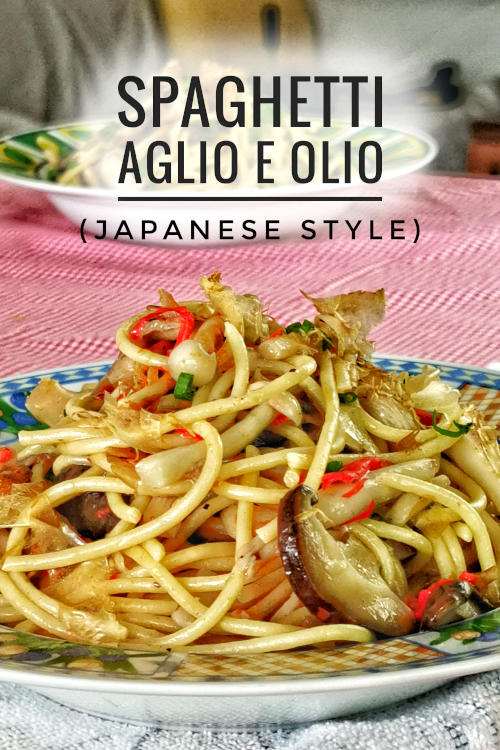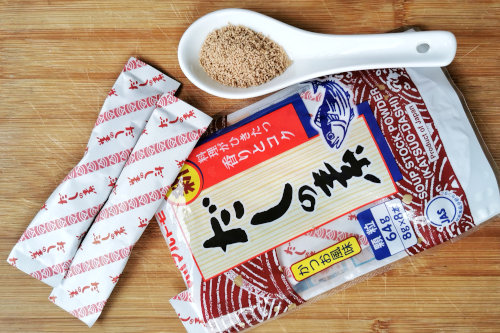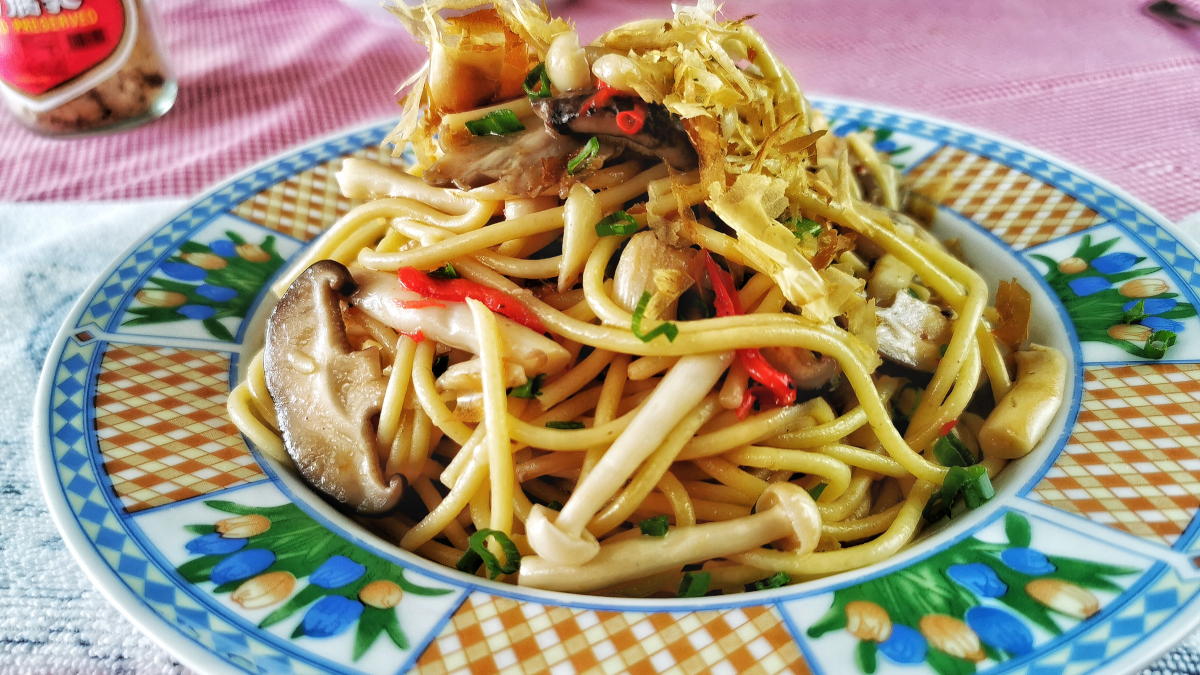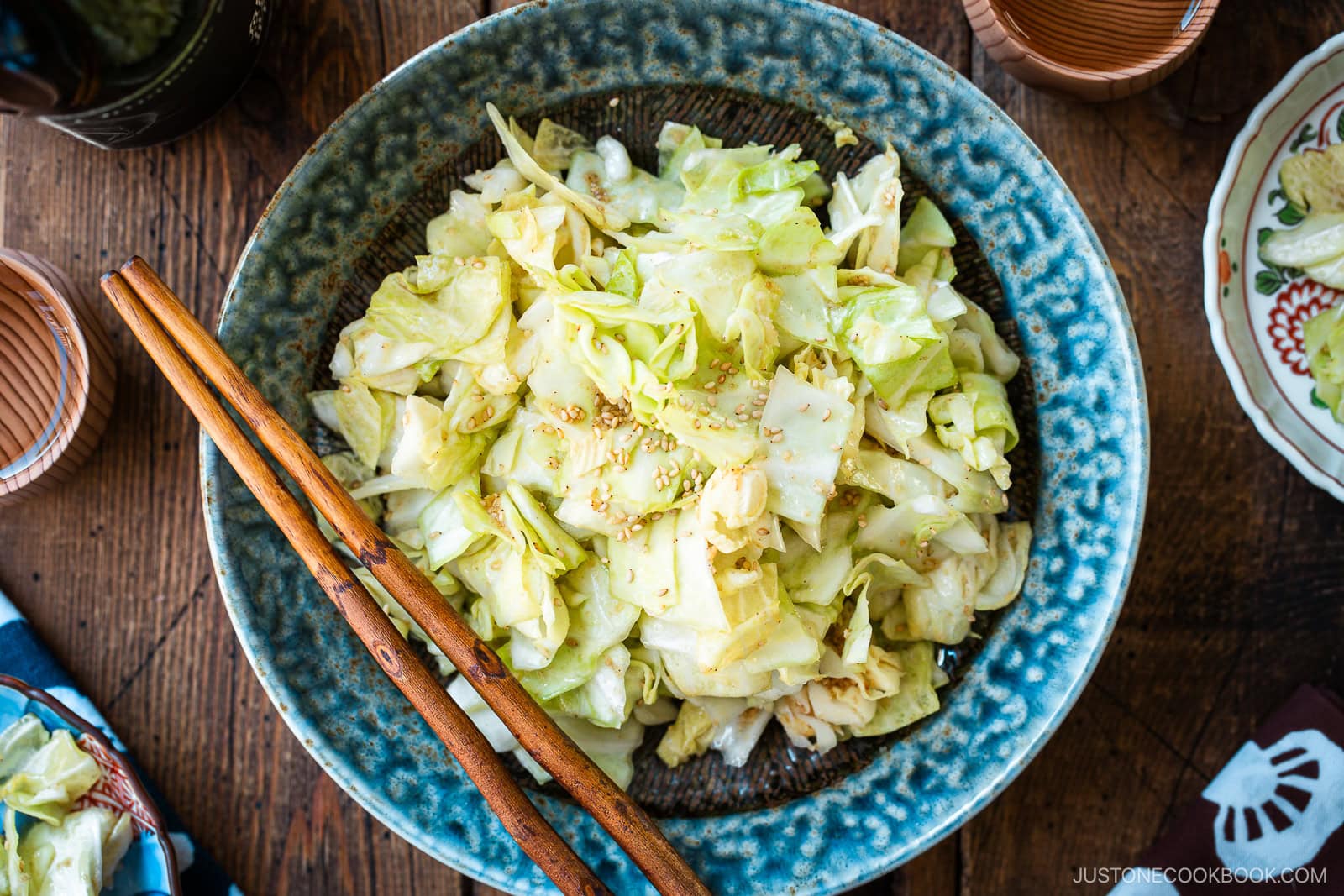This article explores a delightful twist on the classic spaghetti aglio e olio, incorporating popular Japanese ingredients for a unique flavor experience.
While this recipe diverges from the traditional version, it introduces elements such as bonito flakes, shiitake mushrooms, and scallions. The addition of dashi (a Japanese stock) enhances the dish, allowing the classic aglio e olio flavors to shine through.
Here is a recipe for mushroom spaghetti aglio e olio with a Japanese-inspired twist—it’s incredibly delicious and harmoniously blends Italian cooking techniques with Asian flavors.

How to Prepare Spaghetti Aglio e Olio (Japanese Flavor)
1. Cook the Spaghetti the Classic Way
Cooking pasta traditionally is essential. Here’s how to achieve the perfect spaghetti:
- Fill a stockpot with approximately 1.5 liters of water and bring it to a boil. Add 1.5 tablespoons of salt.
- Set the timer for one minute less than the recommended cooking time for al dente, as indicated on the packaging.
- Immerse 200g of dry spaghetti into the boiling water, stirring gently for the first minute to prevent sticking.
- Once softened, the spaghetti will fully submerge. Stir occasionally until it is just shy of al dente.
- Reserve about half a cup of pasta water for the sauce.
- Drain the spaghetti in a colander, then drizzle with olive oil and toss while warm to prevent sticking.
Tips for Cooking Perfect Spaghetti
- Use about 5 quarts (5 liters) of water for every pound (500g) of pasta to allow ample space for expansion.
- Salt the water generously—1.5 tablespoons per pound of pasta is ideal.
- Ensure the water is at a rolling boil when adding the pasta to avoid mushiness.
- Maintain boiling water throughout cooking to prevent sticking and ensure even cooking.
- There’s no need to add oil to the water; stirring occasionally is sufficient to prevent sticking.
- Remember to save some pasta water for the sauce, as its saltiness and starchiness enhance flavor and help bind the sauce to the pasta.
- Cook the spaghetti until just under al dente, as it will continue to cook when combined with the sauce.
- If not mixing the pasta with the sauce immediately, consider tossing it with a teaspoon or two of olive oil to prevent sticking.
2. Sauté the Garlic and Mushrooms
In a skillet, heat three tablespoons of olive oil and add thinly sliced garlic. Sauté over low heat until the garlic turns lightly golden—there’s no need to wait for the oil to smoke.
You may add chili flakes at this stage, depending on your desired spice level. Once the garlic is ready, remove it from the skillet and use the remaining oil to sauté the mushrooms.
After one to two minutes, when the mushrooms are soft, season with salt and pepper, and add thinly sliced red chilies for color.

3. Season the Pasta with Japanese Flavor
Now, introduce the key ingredient: dashi powder. This can be found at Japanese grocery stores or online. Dissolve half a packet (about a large teaspoon) in three to four tablespoons of reserved pasta water before adding it to the pasta.
Be cautious with additional salt, as dashi is already salty. You may also add a teaspoon of Japanese soy sauce for extra depth of flavor.
Transfer the drained pasta to the skillet, stirring rapidly to combine. The starchy pasta water will help create a thick, creamy sauce.
What is Dashi?
Dashi is a traditional Japanese soup stock, known for its savory seafood flavor. The simplest version is vegan, made with kombu (edible kelp), while others include bonito flakes. This recipe utilizes ready-made dashi granules for convenience, providing a flavorful enhancement to the spaghetti.

4. Use Bonito Flakes and Scallion as Toppings
Plate the mushroom spaghetti aglio e olio and garnish with thinly sliced scallions for freshness. For a more authentic touch, sprinkle bonito flakes instead of grated cheese.
What are Bonito Flakes?
Bonito flakes, or Katsuobushi, are made from dried bonito fish and are known for their smoky, savory flavor and umami richness. They are commonly used as a topping for various Japanese dishes and are also an ingredient in dashi stock.
5. Other Japanese Recipes You Should Try
If you enjoy this Japanese spaghetti recipe, consider trying the following dishes:
Dashi granules can also be used to prepare Tamagoyaki, a Japanese-style rolled omelet, which makes a delightful side dish or breakfast option. Additionally, check out the miso soup recipe on this blog for a detailed guide on making dashi from scratch.
Ingredients
For Cooking the Spaghetti
- 200g dried spaghetti
- 1.5 liters water
- 1.5 tablespoons salt
For the Aglio e Olio Sauce
- 3 tablespoons olive oil
- 3 cloves garlic, thinly sliced
- 200g shiitake mushrooms, sliced
- Chili flakes (to taste)
- Salt and pepper (to taste)
- Dashi powder (to taste)
- Thinly sliced scallions (for garnish)
- Bonito flakes (for garnish)
Instructions
For the Spaghetti
- Fill a stockpot with about 1.5 liters of water. Bring to a boil and add 1.5 tablespoons of salt.
- Immerse the spaghetti and stir gently for the first minute.
- Stir occasionally until the spaghetti is just shy of al dente.
- Reserve half a cup of pasta water, then drain the spaghetti.
For the Sauce
- Heat olive oil in a skillet and sauté the garlic until lightly golden.
- Remove the garlic and sauté the mushrooms in the same oil until soft.
- Add sliced red chilies and chili flakes, then season with salt and pepper.
- Dissolve dashi powder in reserved pasta water and add to the mushrooms.
- Add the drained pasta to the skillet and toss quickly to combine.
- Transfer to a plate and garnish with scallions and bonito flakes. Serve immediately.





